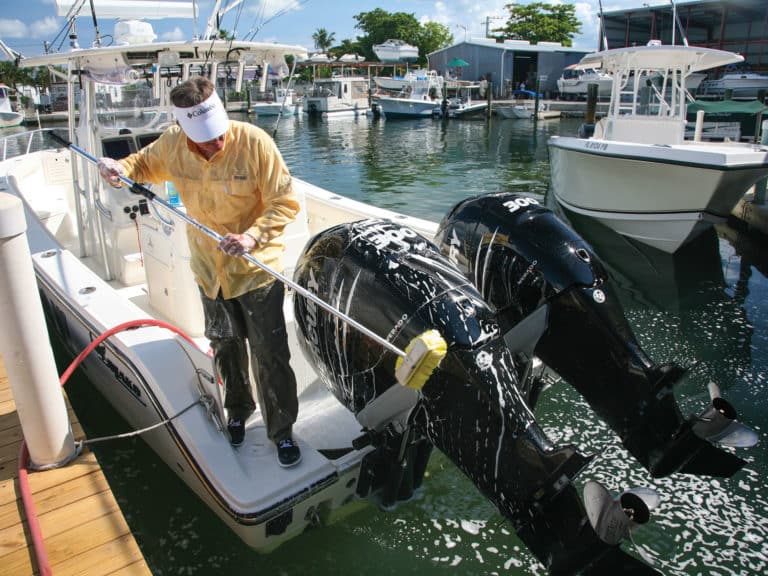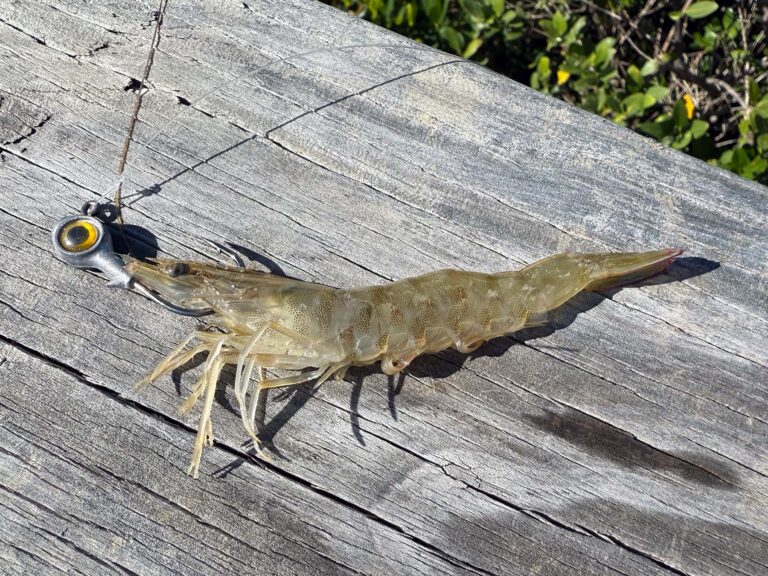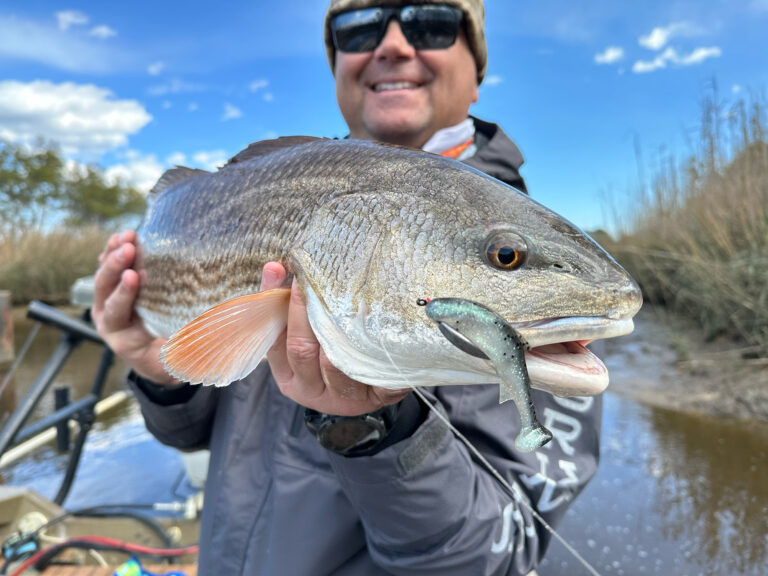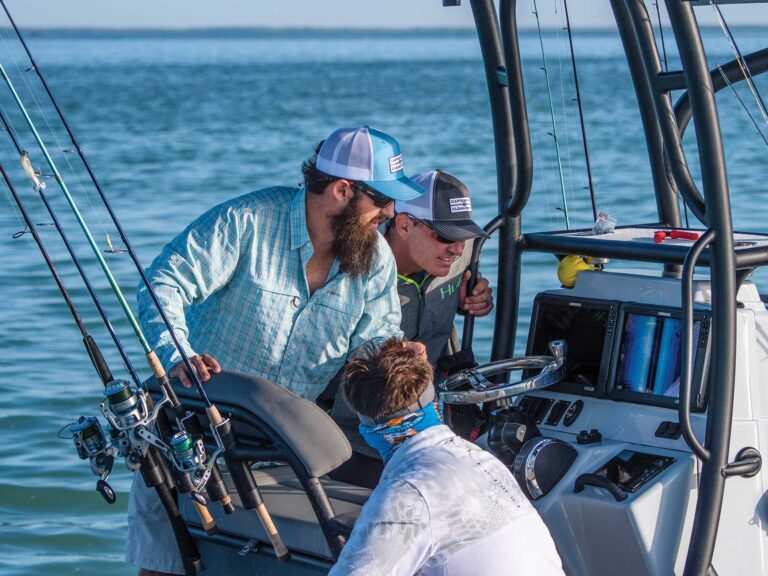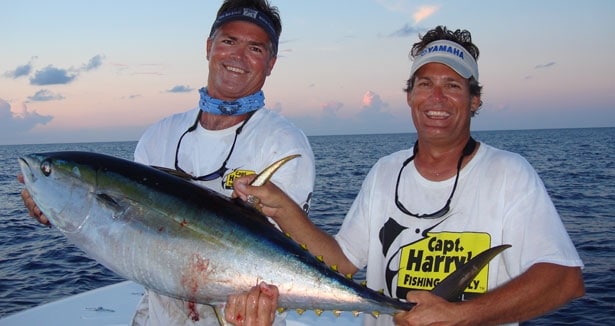
We were “all alone in the end zone,” as I like to say, and about to score – I just felt it. I had eased MARC VI into a frenzy of busting fish and diving terns. Bobby Brack and I free-lined circle hooks hidden inside chunks of bonito and ballyhoo as Terry Flora and Jim Hanrahan pitched handfuls of tidbits to rally the fish. About three minutes into the drift, Brack’s bait was eaten. He advanced the drag, wound tight and held on as 50-pound monofilament sped off the reel. We’d hooked our tuna!
Brack brought it to gaff in fairly short order, a 43-pounder. We bled the tuna and buried it in crushed ice in the fish box. But we barely had time to snap pictures of the catch; the fish and birds were back up. We raced to the action as Brack, Flora and Hanrahan readied the gear. Once again I slowed as we approached the fish and edged the boat into the ruckus, and we repeated our tactics. This time Flora hooked up.
Judging by the initial run, the pressure on the rod and how Flora had his hands full, this was a bigger yellowfin. Flora wanted this fish badly; if he was successful, it would be his first. After a long and tough fight, the tiring fish circled deep beneath the boat. Flora maintained his cool, smoothly pumping and regaining line until we got a peek at the tuna some 20 feet down. It was indeed a beauty! A few minutes later he boated his first yellowfin, which scaled 60 pounds.
View Bahamas Yellowfins in a larger map
In Northwest Providence Channel, we were some 42 miles from the Bimini Sands Resort & Marina. We had come for a few days of offshore trolling and reef-fishing. But after raising a single blue marlin to no avail, catching and releasing lots of small dolphin, getting our bellies full of yellowtailing and even catching a big king, we opted to spend this afternoon looking for yellowfin tuna. There were just two minor glitches: I had not brought enough bait to chunk with, nor had we rounded up live baits that morning, and my specially rigged yellowfin chunking outfits – Penn International 16s spooled with 80-pound braid and 50-pound mono top shots – were back at home. No sweat. We’d make it work.
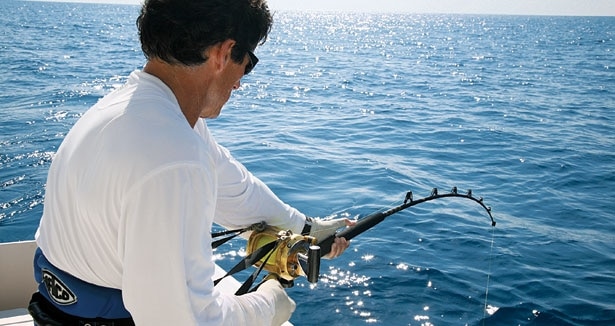
**A Rose of Knowledge
**When it comes to catching tuna in Northwest Providence Channel, Freeport-based angler Pete Rose figured out the game decades ago. A longtime rod-and-reel commercial fisherman, Rose thinks these tuna are here year-round and has caught them in every month. The problem, he says, is that the sooty terns – which red-flag tuna whereabouts – migrate farther south beginning in September or October. And without these birds, it’s difficult to locate fish from a distance. However, come March, the sooty terns migrate back and – along with frigates, skimmers and brown boobies – converge on the small fish pushed to the surface by tuna, such as juvenile bar jacks, runners, mackerel scad and squid. These birds are the sign anglers seek when searching for tuna.
Rose recognizes that these fish move around, though he is unsure exactly where they come from or go to. He cites good to excellent tuna fishing off Andros pretty much year-round, as well as north of Walker’s Cay and near Hole in the Wall, at the eastern mouth of the Channel. This could mean the fish remain within Bahamian waters. His best score, 32 yellowfins, occurred in June one day, but he has had many excellent outings throughout summer, fall and even winter. There is a marked slowdown, however, between September and December. And when questioned on prime moon phases, Rose shrugs and claims he has caught fish with the moon up, during the dark side and at all stages in between.
Peak time is nearly always late afternoon, though blitzes do occur very early in the morning, usually right around and just after sunrise. Early in the season (March through early June), tuna blitzes can materialize throughout the day. As a bonus, dolphin are around then to spice up the action. Even early on, and especially later in the season, that period from 3 p.m. to sundown is undeniably the best. And if you don’t want to chase tuna all day, consider bottomfishing until the afternoon, then hunting for tuna.
**Speed and Vision
**Locating birds is paramount to finding tuna. Set forth without a powerful radar or, at the very least, a quality pair of binoculars, and you’re wasting time and fuel. Also, speed becomes an issue, as you’ll want to beat any other boats to the birds. I set my 6 kW radar, paired with a 5-foot open-array antenna, to an outer range of six miles, with the gain set as high as I can without noise interference. We’ll run into the general tuna areas and study the radar. Birds appear as a faint scratch or glitch on the screen if there are only a few and a solid red mass when they’re thick. Keep your eyes on that screen as the antenna makes a few sweeps, and if the return stays visible, it indicates birds.
When we spot birds, be they one or six miles away, and seas permit, I’ll run wide-open for them: 50-plus mph gets you there not only fast but often ahead of any other boat. A single boat doesn’t tend to put the fish down, but two or three boats working the same school does.
Another luxury of a fast boat is returning to the dock by early evening, sometimes with just enough light for a safe journey. Keep in mind that these fish rally late in the afternoon and you’ll likely stick with them until nearly sundown. In our case, we were 42 miles from Bimini Sands. With our two yellowfins in the box and no more chum, we picked up and made it to the marina in less than an hour, just as the sun kissed the horizon.
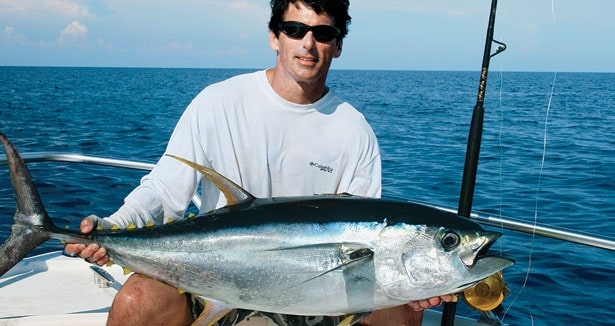
Bahamas Yellowfins
Northwest Providence Channel divides the Little Bahama Bank and the Great Bahama Bank. To its west, it opens into the Gulf Stream, and to its east, the open Atlantic, where it’s referred to as Northeast Providence Channel. Within the waterway are major bottom peaks and valleys, as well as canyonlike depressions. While the Channel isn’t influenced directly by the warm and swift-flowing Gulf Stream except along its western mouth, some internal eddying occurs well inside it. As with the United States’ mid-Atlantic and Northeast canyons, some of the best fishing occurs when internal eddies wash against pronounced bottom structures and ignite the cycle of nutrient to baitfish to game fish.
It is relatively easy for South Florida anglers to fish the Channel from Palm Beach Inlet, Miami’s Government Cut, Haulover Inlet and Fort Lauderdale’s Port Everglades. Although sharks can become a factor, losing a tuna in the Channel to predation isn’t as likely as when tuna fishing in the eastern Bahamas, where sharks are generally a nuisance.
**Equipment
**Loading up with live pilchards and chumming yellowfins into a frenzy is the hot ticket. Chunks of frozen sardines, squid, ballyhoo, goggle-eyes, bonito and even mackerel also do the job. During our June Bimini trip, we were bottomfishing when we decided to chase tuna that afternoon. I cut a few dozen ballyhoo, a couple of Spanish mackerel and a bonito we had caught earlier into small chunks, enough to fill a quarter of a five-gallon bucket and give us maybe three shots.
Next I altered our tackle. Our 50-pound trolling gear loaded with high-visibility yellow line was not promising for catching keen-eyed tuna. I replaced the heavy wind-on leaders with 20 feet of 50-pound fluorocarbon and attached each fluoro leader to the Bimini twist in the fishing line with a Bristol knot. I then tied an 8/0 VMC Tournament Circle in-line hook to the fluorocarbon. We were all set. If you go with the intention of targeting tuna, you won’t need to make do with tackle. Here’s the favored selection.
Rods: Conventional medium-action sticks light enough to hold and fight with but beefy enough for tough tuna.
Reels: Penn International 16 or equivalent matched to rod and sized for a balance of comfort and fighting power.
Lines: 80-pound braid with 200 yards of 50-pound nylon monofilament top shot.
Leaders: 50-pound and 80-pound fluorocarbon.
Hooks: VMC Tournament Circle Hook model 7385, size 8/0, and VMC Tournament Circle Hook model 5789, size 12/0, or equivalents.
Chunks: Bonito, goggle-eyes, mackerel, Spanish sardines and ballyhoo.
Other: A fishing analysis from Roffer’s Ocean Fishing Forecasting Service (roffs.com) or a similar ocean reporting service provides a great head start when looking for the eddies and significant surface-temperature breaks that aggregate bait and tuna.





